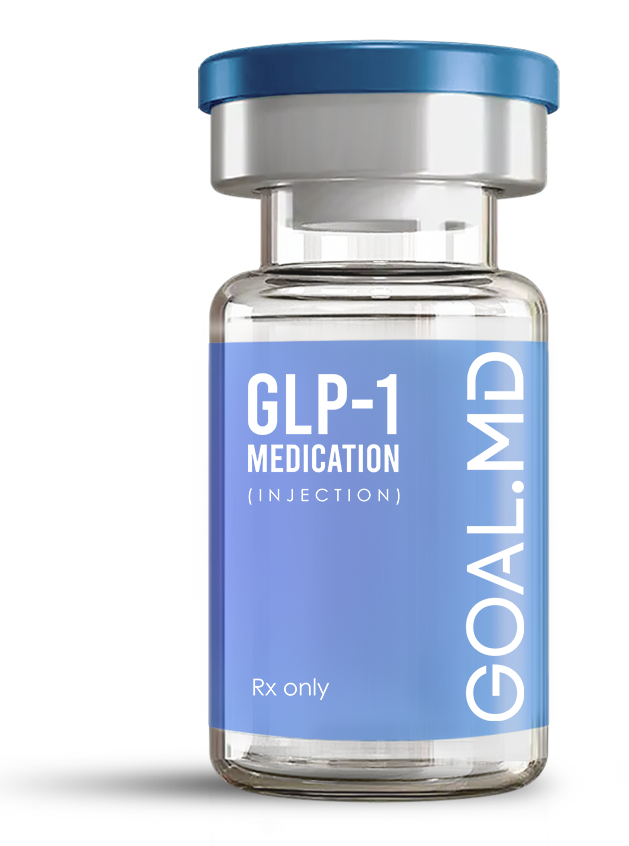
GOAL.MD Health & Wellness Blog
Evidence-based insights, medical weight loss information, and practical tips from our physicians and healthcare experts.

GLP-1 Side Effects: What’s Normal, What’s Not, and How to Feel Better
GLP-1 medications like Semaglutide and Tirzepatide have transformed weight loss for thousands of patients. But as powerful as these medications are, they can come with side effects that feel frustrating, confusing, or even discouraging — especially early on.
This guide breaks down which side effects are expected, which may need a closer look, and what you can do to feel better while continuing your weight loss journey.
🚀 Just getting started? Check out the GLP-1 Squared Launch Blog
🧠 Want a deeper dive? See GLP-1 and Side Effects for how these medications work behind the scenes.
Why Side Effects Happen
GLP-1 receptor agonists work by mimicking your body’s natural incretin hormones. They slow digestion, reduce appetite, and improve insulin response — but that same action can sometimes cause gastrointestinal or energy-related symptoms, especially during the first few weeks of treatment or when doses increase.
Common & Normal GLP-1 Side Effects
These side effects are common and often subside over time:
1. Nausea
Especially common during the first 2–4 weeks
Often triggered by overeating or rich foods
Usually improves with slower eating and smaller meals
2. Fatigue
Can occur during dose escalation
Related to decreased calorie intake or dehydration
May improve with electrolytes, protein intake, or light activity
3. Constipation
A result of slowed gastric emptying
Can be helped with fiber, hydration, and gentle movement
4. Bloating or Early Fullness
Expected effect of slowed digestion
Eat slowly, stop before you feel full, and avoid carbonated drinks
When to Be Cautious
Side effects that worsen or interfere with daily life should be flagged to your provider:
Persistent vomiting or severe nausea
Dizziness or weakness that impacts function
Unexplained abdominal pain
Signs of dehydration (dry mouth, low urine output)
These may signal that you need a slower dose escalation or additional support.
Expert Tips to Feel Better During Treatment
Here are clinically backed ways to reduce discomfort while staying on track:
✅ Eat small, bland meals — Think broth, rice, yogurt, and applesauce during rough days.
✅ Avoid fatty or greasy foods — They worsen nausea and slow digestion further.
✅ Sip water often — But avoid drinking too much at once while eating.
✅ Stay upright after meals — Reclining increases bloating and nausea.
✅ Use ginger or peppermint — Natural remedies that often help calm the stomach.
✅ Walk daily — Even 5–10 minutes can help move digestion and improve energy.
What If You Feel Like Quitting?
You’re not alone. Many patients feel frustrated during the first few weeks. But most side effects improve significantly with time, especially if you communicate with your provider and follow a guided protocol.
Some may benefit from transitioning to GLP-1 Squared, which uses dual medications at lower doses to reduce side effect burden.
Learn more: GLP-1 Squared Launch Blog
Why Side Effects Don’t Mean It’s Not Working
Mild side effects can be a sign that the medication is doing its job — slowing digestion, reducing appetite, and triggering hormonal shifts.
🧠 Curious how it all works? Explore GLP-1 and Side Effects to understand the full mechanism behind these sensations.
Final Thoughts: Stay the Course — But Stay Comfortable
GLP-1 medications are powerful tools, but feeling well during the journey is just as important as the destination. With the right food, hydration, pacing, and support, you can minimize side effects without sacrificing results.
If your symptoms feel unmanageable, talk to your provider. A slower titration schedule or combination protocol may make all the difference.
✅ Ready to take the next step with fewer side effects? Start with GOAL.MD
Why GOAL.MD?
✅ Sourced from audited 503a US compounding pharmacies.
✅ Custom dosages adjusted to your needs.
✅ Free consultation + 24/7 support.

How It Works
1. Quiz
90 seconds. No commitment.
2. Consult
Video chat with your GOAL.MD doctor.
3. Deliver
Meds at your door tomorrow.
Transform Your Life with Physician-Directed Care
Join thousands who've found success with physician-directed care. Take our 3-minute quiz to see if medical weight loss is right for you.








